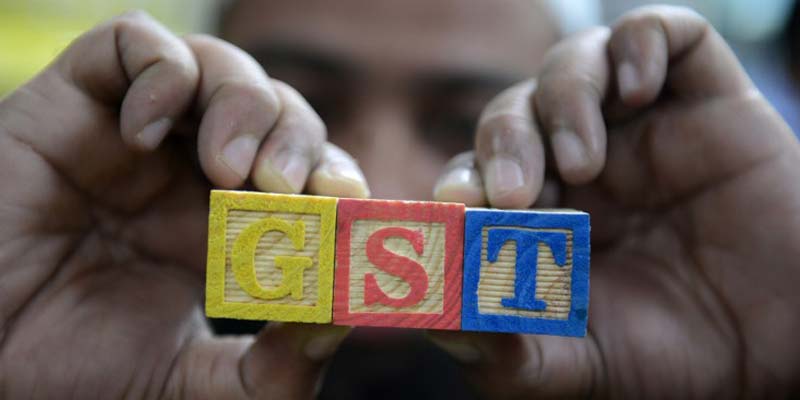- India
- Oct 08
What is GST compensation to states?
The Centre released Rs 40,000 crore to states and UTs on October 7 under the back-to-back loan facility to compensate for the shortfall in GST revenues.
Earlier on July 15, 2021, an amount of Rs 75,000 crore was released to states & UTs with legislature. With the current release, the total amount released in the current financial year as back-to-back loan in-lieu of GST compensation has reached Rs 1.15 lakh crore.
Goods and Services Tax (GST)
• The introduction of the Goods and Services Tax (GST) regime in the country was a very significant step in the field of indirect tax reforms in India. By amalgamating a large number of central and state taxes into a single tax, the aim was to mitigate cascading or double taxation in a major way and pave the way for a common national market.
• Before implementation of the GST regime in the country, the issue was deliberated in detail by the empowered committee of state finance ministers, select committee of Rajya Sabha and Parliamentary Standing Committee on Finance.
• After detailed and prolonged deliberation, the Constitution (One Hundred and First Amendment) Act, after ratification by 50 per cent of the States, was assented to by the President on September 8, 2016. Thereafter, Central Goods and Services Tax (CGST) Act, Integrated Goods and Services Tax (IGST) Act, Union Territory Goods and Services Tax (UTGST) Act, and Goods and Services Tax (Compensation to States) Act were enacted in order to achieve a successful rollout of the GST regime in the country from July 1, 2017.
• With GST, India took a quantum leap towards the goal of establishing ‘one nation, one market’ by dismantling multiple taxes and unifying them into a single tax.
What is GST compensation to states?
• The Goods and Service Tax (Compensation to States) Bill, 2017 was passed by Lok Sabha on March 29, 2017 to provide for compensation to the states for the loss of revenue arising on account of implementation of the GST in pursuance of the provision of the Constitution (One Hundred and First Amendment) Act, 2016.
• Compensation will be provided to a state for a period of five years from the date on which the state brings its SGST Act into force.
• For the purpose of calculating the compensation amount in any financial year, year 2015-16 is assumed to be the base year, for calculating the revenue to be protected.
• The growth rate of revenue for a state during the five-year period is assumed to be 14 per cent per annum.
The base year tax revenue consists of the states’ tax revenues from:
i) State Value Added Tax (VAT)
ii) central sales tax
iii) entry tax, octroi, local body tax
iv) taxes on luxuries
v) taxes on advertisements, etc.
• However, any revenue among these taxes arising related to supply of alcohol for human consumption, and five specified petroleum products, is accounted as part of the base year revenue.
• A GST Compensation Cess is levied on the supply of certain goods and services, as recommended by the GST Council to finance the compensation cess.
• The GST Compensation Cess levied under Section 8 of the GST (Compensation to States) Act, 2017 is transferred into a non-lapsable Fund known as GST Compensation Fund which forms part of the Public Account of India as provided in Section 10(1) of the Act.
• The states are being compensated for any loss of revenue arising on account of implementation of GST for five years out of the Compensation Fund as per Section 10(2) of the said Act.
Back-to-back loan facility
• The Centre has front-loaded the release of assistance under the back-to-back loan facility with more than 72 per cent of the total estimated shortfall for the entire year of Rs 1.59 lakh crore being released so far. The balance amount will be released in due course.
• This release of funds as back-to-back loans is in addition to the bi-monthly GST compensation being released out of cess collection.
• The 43rd GST Council meeting on May 28, 2021 had decided that the central government would borrow Rs 1.59 lakh crore in 2021-22 and release it to states and UTs with legislature on a back-to-back basis to meet the resource gap due to the short release of compensation on account of inadequate amount collected in the Compensation Fund.
• This amount is as per the principles adopted for a similar facility in 2020-21, where an amount of Rs 1.10 lakh crore was released to states under a similar arrangement.
• This amount of Rs 1.59 lakh crore to be provided to states as back-to-back loan would be over and above the compensation in excess of Rs 1 lakh crore (based on cess collection) that is estimated to be released to states/UTs with legislature during the current financial year. The sum total of Rs 2.59 lakh crore is expected to exceed the amount of GST compensation accruing in 2021-22.
• All eligible states and UTs (with legislature) have agreed to the arrangements of funding of the compensation shortfall under the back-to-back loan facility.
• The release of Rs 40,000 crore is funded from borrowings of the Centre in 5-year securities, totalling Rs 23,500 crore and 2-year securities for Rs 16,500 crore issued in the current financial year, at a Weighted Average Yield of 5.69 and 4.16 per cent per annum respectively. No additional market borrowing by the central government is envisaged on account of this release.
Manorama Yearbook app is now available on Google Play Store and iOS App Store


